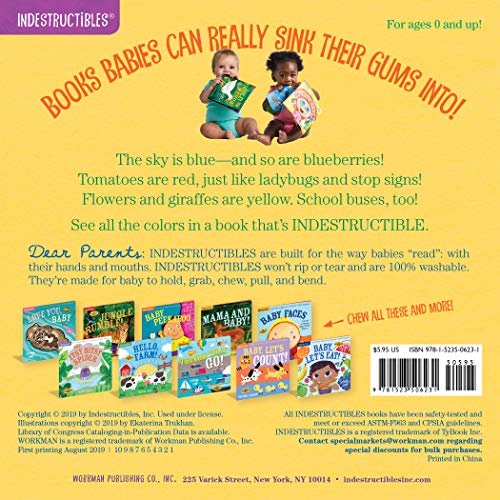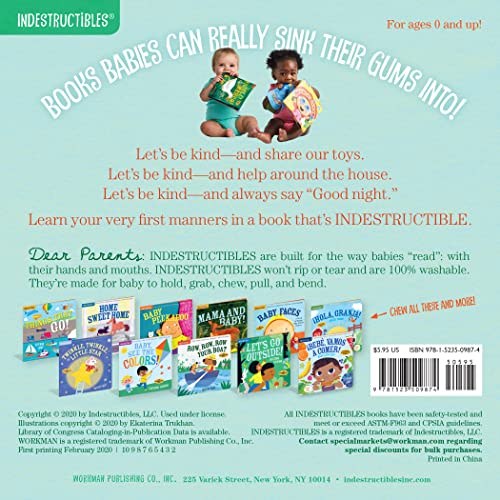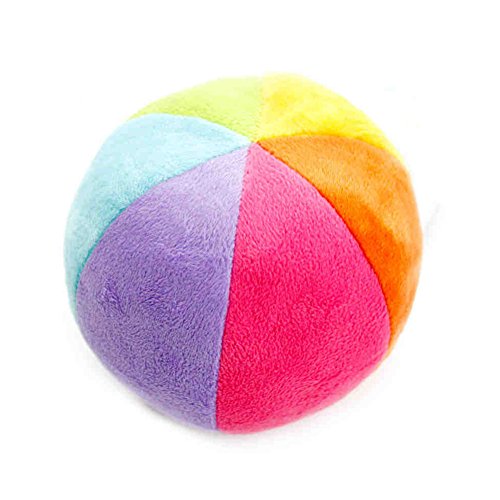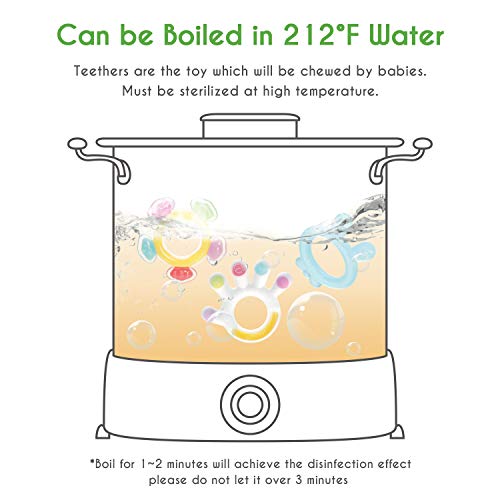
Best Toys for Babies 12-15 Months
Congratulations, your little one has officially been promoted from baby to toddler! Toddlers are more active, expressive and curious than babies. Your child may begin to use words, and take a few steps on her own. Encourage active play to help them thrive.
12-15 Months Social & Emotional Development
It's a special time when your baby transforms into a toddler. Cue in hugs, cuddles and kisses as your little one will start showing their affection to you! At this age, your little one may start to play alongside other children, and start to show empathy by for example looking sad when they see someone else crying. At this age, tantrums may also begin as a normal part of your child's development. This is a good age to start teaching your child "wanted behaviors" and helping them label what they are feeling.

12-15 months Social & Emotional
Milestones
- Copies other children while playing, such as taking toys out of a container when another child does so.
- Shows object she likes to you.
- Claps her hands when excited.
- Hugs stuffed dolls or other toys.
- Shows you affection through hugs, cuddles, or by kissing you.
12-15 months Social & Emotional development
How You Can Help Your Baby Thrive
- Find ways to let your little one help with everyday activities. For example, have her get her shoes to go outside, put the snacks in the bag for the park, or put the socks in the laundry basket.
- Have steady routines for feeding and sleeping. Create a calm, quiet bedtime for your little one. Read one or two books to her.
- Show your little one different objects, and teach her what you do with them. For example, ask her, “What do you do with a book? You open it and read it.” Demonstrate it to her, and see if she copies you.
- Sing songs to her with gestures, such as “Wheels on the Bus.” See if your child tries to do some of the movements.
- Say what you think your child is feeling (for example, sad, upset, frustrated, happy). Use your words, facial expressions, and voice to show what you think your little one is feeling. For example, say “You are upset because we can’t go outside, but you can’t bite. Let’s go look for an indoor game.”
- Tantrums at this age are and are more likely if your child is tired or hungry. Tantrums should become shorter and happen less as your little one gets older. You can try a distraction, but it is ok to let her have a tantrum without doing anything. Give your little one some time to calm down and move on.
- Teach your little one “wanted behaviors.” Show her what to do and use positive words of affirmation or give your little one hugs and kisses when she does it. For example, if she pulls your dog's tail, teach her how to pet gently, and say "good job" when she does it.
- Make a “photo book” with pictures of people and pets in your little one's life. Name the people and the pets as you look through the book together. Make sure to include a picture of your child too.
- Make up a simple “cleanup song” and sing it while you teach your child to help you “clean up” around the house. Have your little one help put toys in a basket or hand you things to put away.
- “Pretend talk” to your child with a stuffed animal or a puppet. See if your child tries to copy you or use another stuffed animal or puppet to “talk” with the one you are holding.
top list
Baby Toys for 12-15 Months Social & Emotional Development
Check out the full collection here.
12-15 Months Language & Communication Development
At this age, your little one's language development matures. Her babbling starts to include real words, and she might name familiar objects. But it’s not all words just yet – your toddler still grunts, nods and points to let you know what they want or to share what they are interested in.

12-15 months Language & Communication
Milestones
- Tries to say one or two words besides “mama” or “dada,” such as “da” for dog or “ba” for ball.
- Looks at familiar objects when you name them.
- Follows directions given to her with both gestures and words. For example, she gives you a toy when you hold out your hand and say, “Please give me the toy.”
- Points to ask for something she wants or to get help.

12-15 months Language & Communication
How You Can Help Your Baby Thrive
- Repeat and add to what your little one says. She may say “ba” for ball and you can say “Ball, yes, that’s a ball.”
- Tell your little one the names of objects when she points to them and wait a few seconds to see if she makes any sounds before handing it to her. If she does make a sound, acknowledge her, and repeat the name of the object. “Yes! Car.”
- Limit screen time (TV, tablets, phones, etc.) to video calls with loved ones. Screen time is not recommended for children under the age of 2 years. Little ones learn by talking, playing, and interacting with other people.
- Continue to talk, read, sing, and tell your little one the names of things throughout the day.
- Read a new book after a favorite one to explore new stories. Children like to do their favorite things over and over again. You can use the things they are familiar with and like to do to introduce new things.
- You can teach simple gestures and sign language (for example, pointing and waving) to help your little one communicate with you and show you what she wants.
top list
Baby Toys for 12-15 Months Language and Communication Development
Check out the full collection here.
12-15 Months Cognitive Development
At this point in your child’s development, myelination (a process in which the nerve cells establish a thick protective coating that helps speed up brain signals) is in full swing. One area where the this progress is most apparent is in your little one's increasing memory. Up to now, your child has been able to recognize familiar objects—a type of memory that involves only one region of the brain: the hippocampus. But after his first birthday, due to the development in the cerebral cortex, she becomes able to consciously recall information at will.

12-15 months Cognitive
Milestones
- Tries to use things the right way, like a book, phone, or cup.
- Stacks at least two small objects, such as blocks.

12-15 months Cognitive
How You Can Help Your Baby Thrive
- Encourage your little one to play with blocks. You can help her stack the blocks, and she can knock them down.
- Play simple games, like hide and seek. Let your child watch you hide behind a closet and then wait for her to come and “find” you.
12-15 Months Motor Development
Being active helps build your little one's muscle strength for more complex movements such as standing, walking and running. At this age, they may start to take a few steps on their own and use their fingers to feed themselves.

12-15 months Motor Development
Milestones
- Can take a few steps on her own.
- Uses her fingers to feed herself some food.

12-15 months Motor Development
How You Can Help Your Baby Thrive
- Have your child use a cup without a lid for drinking and help her practice eating with a spoon. Learning to eat and drink is messy but it is also a lot of fun!
- Baby-proof your home, giving your baby a safe place to explore. For example, move sharp or breakable things out of reach and lock away medicines, chemicals, and cleaning products. You can also add corner cushions, drawer locks, socket covers and more to minimize possible hazards for your baby.
- Sing and play children’s songs and songs your family enjoys. Have a 'dance party' with your child.
- Blow bubbles and let your little one pop them. Say things as she pops them, like “Pop, pop.”
12-15 Months Sensory Development
Your little one's senses are maturing, and around this age her vision is anticipated to catch up with adults. As you can continue to widen your little one's food menu, and they become more and more mobile this continues to open up their world to different tastes, textures, and more.

12-15 months Sensory Development
Milestones
- Sight: Between 1 year and 18 months, little ones will have the same vision as an adult.
- Smell/Taste: Continues to develop food preferences.
- Hearing: Hitting language and communication milestones are connected with hearing. If your little one is not meeting them, it could be interlinked with hearing.
- Touch: With increased motor skills, increasingly able to independently go after and touch things she is interested in.

9-12 months Sensory Development
How You Can Help Your Baby Thrive
- Sight: Show your baby age appropriate flash cards.
- Continue to give your baby toys that help her hone her hand-eye coordination.
- Smell: Continue to expose your little one to different smells through for example trips outdoors.
- Hearing: As your little one's motor skills evolve, you can match these with more complicated yet age-appropriate musical instruments to stimulate her through different sounds.
- Touch: Continue to expose your little one to different textures through finger foods, toys and other surfaces. Give plenty of hugs and affection.
- Taste: Continue to enable your little one to explore the world of foods. Be mindful of food recommendations for your child's age, and choking hazards
Sources:
- https://www.unicef.org/parenting/child-development/your-toddlers-developmental-milestones-1-year
- https://www.cdc.gov/ncbddd/actearly/milestones/milestones-15mo.html
- https://raisingchildren.net.au/toddlers/development/development-tracker-1-3-years/12-15-months#:~:text=At%2012%2D15%20months%2C%20toddlers,attention%20are%20good%20for%20development.
- https://www.enfagrow.com.sg/development/toddler/milestones/brain-development-12-18-months
- https://empoweredparents.co/sensory-development/
- https://www.babycenter.com/toddler/development/warning-signs-of-a-hearing-problem-in-children-12-to-36-mont_12292
- https://www.rightbraineducationlibrary.com/post/2017/05/03/5-types-of-baby-flash-cards-you-need












































